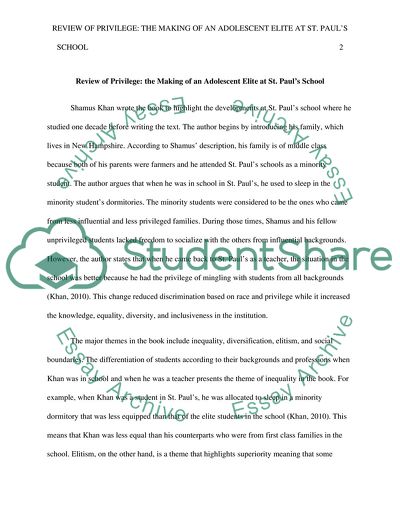Cite this document
(The Making of an Adolescent Elite at St. Pauls School Book Report/Review, n.d.)
The Making of an Adolescent Elite at St. Pauls School Book Report/Review. Retrieved from https://studentshare.org/education/1814155-critical-book-review-of-privilege-by-shamus-rahman-khan
The Making of an Adolescent Elite at St. Pauls School Book Report/Review. Retrieved from https://studentshare.org/education/1814155-critical-book-review-of-privilege-by-shamus-rahman-khan
(The Making of an Adolescent Elite at St. Pauls School Book Report/Review)
The Making of an Adolescent Elite at St. Pauls School Book Report/Review. https://studentshare.org/education/1814155-critical-book-review-of-privilege-by-shamus-rahman-khan.
The Making of an Adolescent Elite at St. Pauls School Book Report/Review. https://studentshare.org/education/1814155-critical-book-review-of-privilege-by-shamus-rahman-khan.
“The Making of an Adolescent Elite at St. Pauls School Book Report/Review”, n.d. https://studentshare.org/education/1814155-critical-book-review-of-privilege-by-shamus-rahman-khan.


